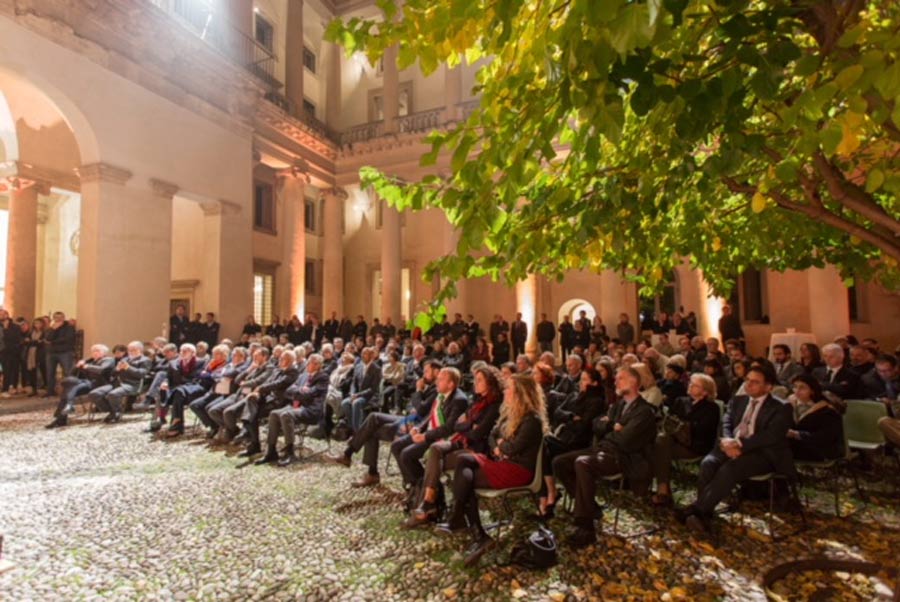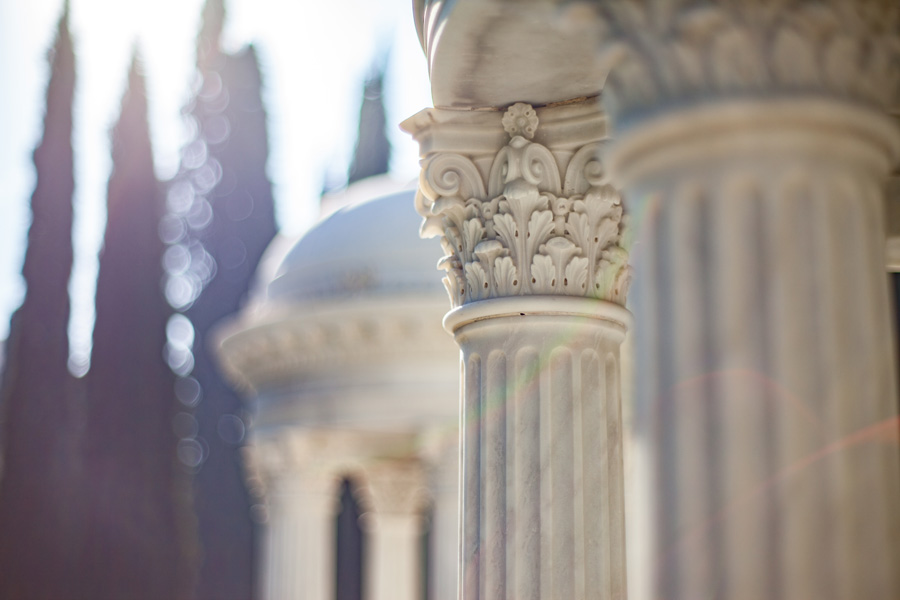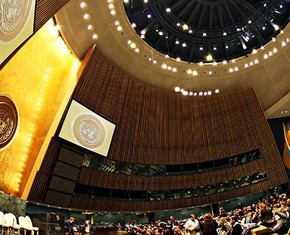The Palladio Museum in Vicenza, Italy hosted an exhibition this month featuring several of the most iconic buildings of the Baha’i Faith.
The exhibition, titled “Architecture and Marble: Dialogue Between Ingenuity and Matter,” was organized by Margraf, the Italian company that cut and chiseled the Italian marble for the Seat of the Universal House of Justice, the International Baha’i Archives building, the terraces in the Baha’i Gardens in Haifa, and the Continental Baha’i Houses of Worship in India and Samoa.
Formerly known as Industria Marmi Vincentini, the company, which was founded in Chiampo, Italy, was established in 1906. Over the more than 100 years of its existence, it has had the opportunity to work with numerous architects on extraordinary projects.
“Among its many big projects all over the world, Marmi Vincentini felt that the work with the Baha’is has been especially meaningful,” said architect Sohrab Youssefian, referring to the special opportunity to explore over the decades how spiritual principles can give rise to new forms of architectural expression, which have touched and inspired hundreds of millions of people.
The buildings featured in the exhibition have aimed to reflect the intangibility of the sacred in physical structures. Concepts central to Baha’u’llah’s teachings, such as the oneness of humankind, the essential harmony of science and religion, the coherence between material and spiritual dimensions of life, and the power of the sacred to inspire humanity’s noblest endeavors, are embodied in these architectural feats

Guests at the opening reception of “Architecture and Marble: Dialogue between Ingenuity and Matter,” an exhibition at the Palladio Museum highlighting the Italian contribution to several iconic Baha’i buildings.
“Spirituality is not an abstract thing. It is the noblest matter of man,” said Mr. Youssefian at the exhibition’s opening reception.
Having worked with Margraf throughout the decades as a representative of the Baha’i community, Mr. Youssefian was visibly moved by the exhibition, which demonstrated the extraordinary results of many years of fruitful collaboration.
“I was struck by the opportunity to reflect again on these architectural achievements,” explained Mr. Youssefian. “They call to mind a verse from Baha’u’llah, in which he says that even the stones of the earth today call humanity to the divine:”
The Breeze of God hath been wafted over the world at the advent of the Desired One in His great glory, whereupon every stone and clod of earth hath cried out: “The Promised One is come! The Kingdom is God’s, the Mighty, the Gracious, the Forgiving.” – Baha’u’llah, The Summons of the Lord of Hosts, p. 55.
The relationship between the work of the Baha’i community and the northeastern region of Italy stretches back to the 1940s when marble from Chiampo was used to build the mausoleum of the Shrine of the Bab. During his ministry, Shoghi Effendi used Chiampo marble for the Monument Gardens in Haifa on Mount Carmel. After his own passing, arrangements were made for the column in London marking the resting place of the Guardian to be fashioned from the same stone.

During his ministry, Shoghi Effendi used Chiampo marble for the Monument Gardens in Haifa on Mount Carmel.
The exhibition included archival materials, such as original designs, charts, documents, photos, and videos. Part of the exhibition was dedicated to the technical evolution of the company’s work, which has advanced significantly over the last century.
Hossein Amanat and Fariborz Sahba, two Baha’i architects who designed the featured buildings, were also present at the reception and addressed the audience.
“Architecture and Marble: Dialogue between Ingenuity and Matter” was open between 19 October and 19 November 2017, coinciding with the 200th anniversary of the birth of Baha’u’llah, celebrated last month by millions around the world. The exhibition received widespread media coverage in Italy and was attended by around 1,000 visitors—attracting particular attention from those in the field of architecture.
















Comments
Sign in or create an account
Continue with Googleor